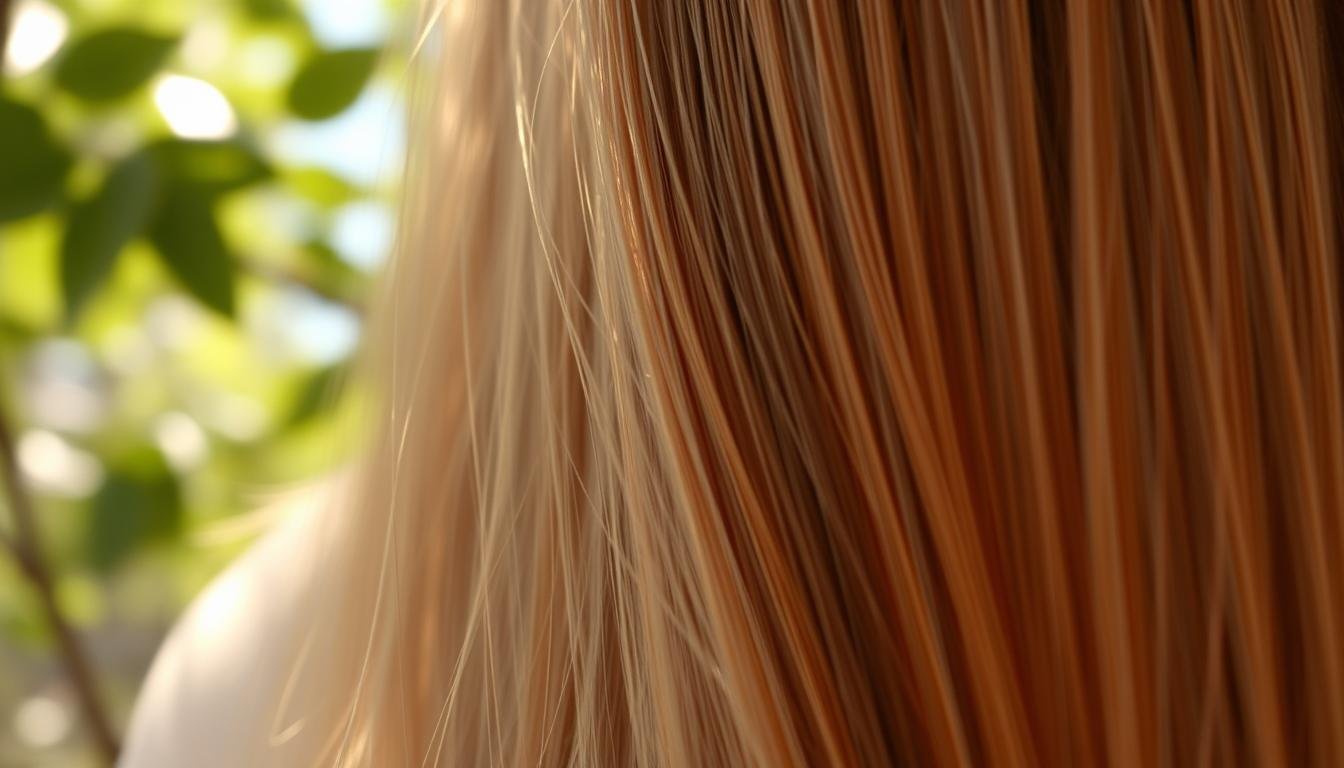How to Maintain Healthy Hair? Essential Care Tips
Did you know that we lose 50-100 hairs daily as part of hair growth? But, losing more hair than usual might mean there’s a problem. This Guide will show you how to keep your hair healthy and shiny from root to tip.
Struggling with dry, damaged, or dull hair? We’ve got you covered. We’ll talk about the basics of hair health, good Care Routines, and tips from experts. You’ll learn how to stop Damage, grow your hair, and get strong, beautiful locks with the right care.
Key Takeaways
- Understand the structure and growth cycle of healthy hair
- Identify signs of hair health and common factors that impact it
- Develop an effective hair care routine for cleansing, conditioning, and styling
- Nourish hair from the inside out through proper nutrition and diet
- Discover natural remedies and treatments to strengthen and rejuvenate hair
- Protect hair from environmental damage and avoid common care mistakes
- Choose the right hair care products and seek professional treatments when needed
Understanding the Basics of Hair Health
To keep your hair healthy and vibrant, it’s key to know the basics of hair structure and growth. Learning about hair health science helps us find ways to grow hair and avoid damage.
Hair Structure and Growth Cycle
Hair has two main parts: the hair follicle in the skin and the hair shaft we see. The follicle is where hair growth starts. Hair goes through three phases: anagen (growing), catagen (changing), and telogen (resting).
Factors Affecting Hair Health
- Genetics: Your inherited traits can affect your hair’s thickness, texture, and growth.
- Nutrition: Eating well with vitamins, minerals, and proteins helps your hair grow and stay healthy.
- Environmental conditions: UV, pollution, and harsh weather can harm your hair.
- Stress: Too much stress can mess up your hair’s growth cycle and cause more shedding.
Signs of Healthy vs. Damaged Hair
Healthy hair is smooth, shiny, and strong, with little Breakage or split ends. Damaged hair looks dull, frizzy, and brittle, breaking easily. Knowing these signs helps you see if your hair needs care.
“Proper Hair Care is the key to maintaining the health and vitality of your locks.”
How to Maintain Healthy Hair?
Keeping your hair healthy is key to looking great and feeling confident. To do this, you need a Hair Care routine that fits your needs. This includes how to wash and condition your hair, and the importance of what you eat.
Establish a Consistent Routine
Being consistent is important for hair care tips. Create a routine that includes washing, conditioning, and styling your hair regularly. Try different products and methods to find what works best for you.
Focus on Cleansing and Conditioning
Cleansing and conditioning are crucial for how to maintain healthy hair. Use a gentle, sulfate-free shampoo to clean your hair without losing its natural oils. Then, use a nourishing conditioner to address your hair’s specific needs, like dryness or frizz.
Nourish from Within
Your hair’s health is tied to what you eat. Make sure your diet is full of vitamins, minerals, and proteins that help your hair grow strong. Eat foods like eggs, avocados, spinach, and salmon to give your hair the nutrients it needs.
“Healthy hair starts from the inside out. A balanced diet is crucial for maintaining strong, vibrant locks.”
By following these tips, you can keep your hair healthy and look great. Enjoy the confidence that comes with having beautiful, healthy hair.

Essential Hair Care Routine Components
Keeping your hair healthy and strong needs a good hair care plan. This plan should match your hair type and any hair problems you have. Let’s look at the key parts of a good hair care routine to help you reach your hair goals.
Proper Washing Techniques
Washing your hair right is the base of a great hair care routine. Choose a gentle, sulfate-free shampoo that cleans well without taking away your hair’s natural oils. Use your fingertips to massage the shampoo into your scalp. Make sure to rinse well. Don’t wash your hair too much, as it can dry out and damage your hair.
Conditioning Methods
Conditioning is key to keeping your hair moist and preventing breakage. Use a nourishing conditioner from the middle of your hair to the ends, but skip the scalp. Let it sit for a few minutes before rinsing to let the ingredients soak in. Add a deep-conditioning treatment once a week for extra moisture and strength.
Drying and Styling Best Practices
- Gently pat your hair dry with a soft, microfiber towel or T-shirt to avoid friction and breakage.
- Limit the use of hot styling tools, such as blow dryers, straighteners, and curling irons, to minimize heat damage.
- When using hot tools, always apply a heat-protective product to create a barrier and safeguard your hair.
- Opt for air-drying whenever possible, and style your hair with a light, nourishing product that won’t weigh it down.
By adding these key parts to your hair care routine, you’ll be on the path to healthy, hair strengthening results.
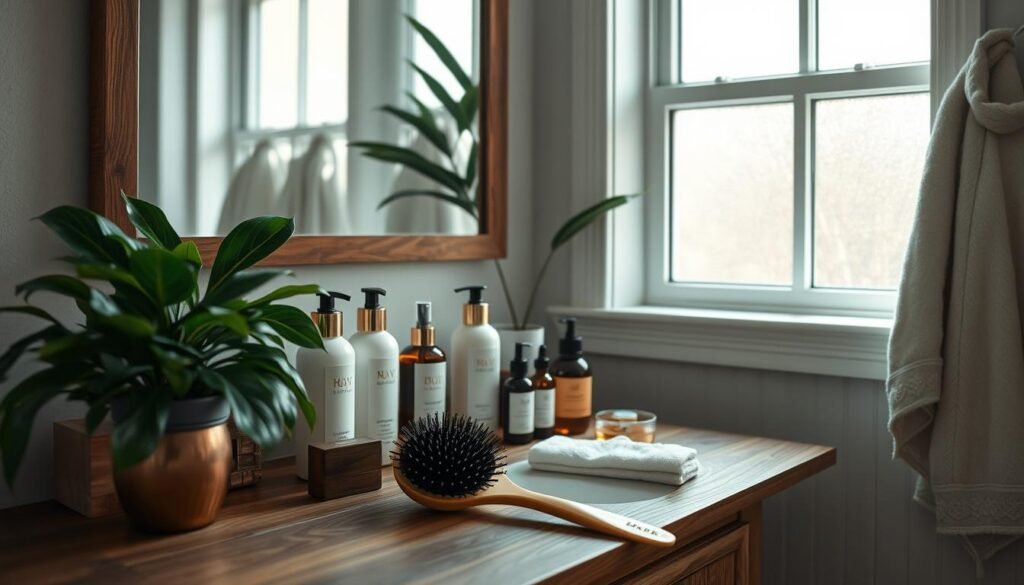
Nutrition and Diet for Strong Hair
Healthy, vibrant hair comes from more than just hair care. It starts with a balanced diet full of nutrients. Understanding how nutrition affects hair health helps you nourish your hair from the inside.
Vitamins and minerals are key for hair growth and strength. Biotin, iron, zinc, and vitamin C help hair follicles grow strong. Protein is also crucial for hair structure and strength.
- Eat foods rich in nutrients like eggs, fatty fish, nuts, seeds, and leafy greens. They nourish your hair from the inside.
- Drink lots of water to keep your hair hydrated. Dehydration can make hair dry and brittle.
- Manage stress and get enough sleep. These help your hair stay healthy and vibrant.
Focus on a balanced diet and healthy habits for the best hair. This way, your hair can shine with a vibrant look that comes from within.
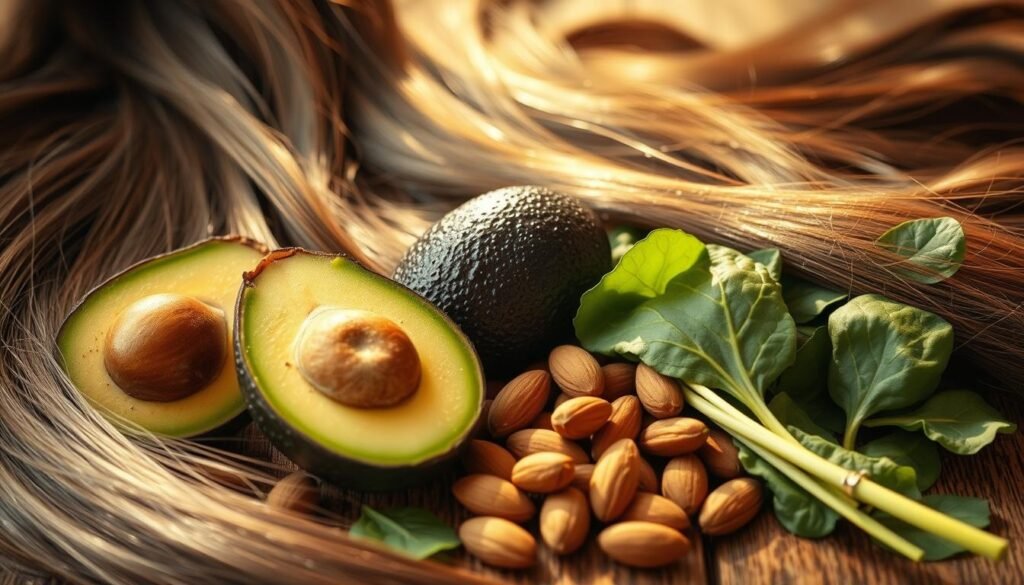
“Healthy hair starts with a healthy diet. Nourish your hair from the inside out for lasting results.”
Natural Remedies and Hair Masks
Discover the power of natural hair remedies and DIY hair treatments. They can nourish and strengthen your hair. We’ll look at effective solutions using natural ingredients to revitalize your hair and promote healthy growth.
DIY Hair Treatments
Making your own hair treatments at home is fun and rewarding. Natural hair nourishment ingredients let you create formulas for your hair needs. These DIY concoctions can greatly improve your natural hair remedies.
- Avocado and Honey Mask: Blend a ripe avocado with a tablespoon of honey for a deeply nourishing treatment that can improve hair texture and shine.
- Coconut Oil and Aloe Vera Hair Serum: Combine coconut oil and aloe vera gel for a soothing serum that can help soothe scalp irritation and promote healthier hair growth.
- Egg Yolk and Olive Oil Hair Mask: Whisk an egg yolk with a few tablespoons of olive oil for a protein-rich mask that can strengthen and repair damaged hair.
Essential Oils for Hair Care
Adding essential oils to your hair care routine can change the game. These concentrated plant extracts have many benefits for hair, from hair nourishment to natural hair remedies.
- Rosemary Oil: Known for stimulating hair growth and improving scalp circulation.
- Lavender Oil: It’s calming and soothing, reducing scalp irritation and promoting relaxation.
- Peppermint Oil: It’s invigorating and refreshing, stimulating the scalp and enhancing hair volume.
Weekly Hair Mask Recommendations
Adding a weekly hair mask to your routine can greatly improve your natural hair remedies and hair health. These treatments deeply nourish, repair, and revitalize your hair. They make your hair stronger, healthier, and more manageable.

“Consistent use of a weekly hair mask can transform the look and feel of your hair, promoting hair nourishment and enhancing its natural radiance.”
Protecting Hair from Environmental Damage
Our hair is constantly exposed to harmful environmental factors. These include the sun’s UV rays and air pollutants. It’s vital to protect your hair to keep it healthy and vibrant. There are many ways to shield your hair and prevent damage.
Wearing protective hairstyles is a great start. Styles like buns, braids, or high ponytails keep your hair away from your face and neck. This reduces exposure to harmful elements. Also, wearing a wide-brimmed hat or scarf outdoors adds extra protection.
Using the right hair care products is also crucial. Look for shampoos, conditioners, and styling products with UV-blocking agents and antioxidants. Regular trims help remove split ends, keeping your hair healthy and strong.
For different climates and seasons, your hair care needs may change. In cold winters, use a hydrating hair mask to combat dryness. In the summer, choose lightweight, water-based products to protect against the sun.

By taking proactive steps, you can protect your hair from environmental stressors. With the right hair care tips, your hair can stay healthy and vibrant, no matter the weather.
Common Hair Care Mistakes to Avoid
Keeping your hair healthy is key to avoiding damage. Many people make mistakes that harm their hair. Knowing these mistakes helps you keep your hair strong and shiny.
Heat Styling Errors
Using hot tools like curling irons and straighteners too much can damage your hair. The heat takes away the natural oils, making your hair dry and brittle. To protect your hair, use a heat-protectant spray, limit heat time, and keep tools away from your scalp.
Chemical Treatment Risks
Chemical treatments like dyes and perms can harm your hair if not done right. These chemicals can dry out and weaken your hair. Always talk to a professional stylist, follow their advice, and give your hair time to recover between treatments.
Poor Maintenance Habits
- Neglecting regular trims: Failing to trim split ends can cause further damage and breakage.
- Excessive brushing or combing: Aggressive brushing can lead to hair loss and breakage.
- Sleeping with wet hair: Sleeping with damp hair can lead to tangles, matting, and increased susceptibility to damage.
- Ignoring hair type: Using the wrong hair care products for your hair type can exacerbate issues and prevent desired results.
By avoiding these common mistakes, you can keep your hair healthy. A good hair care routine helps prevent Hair Damage and keeps your hair looking great.
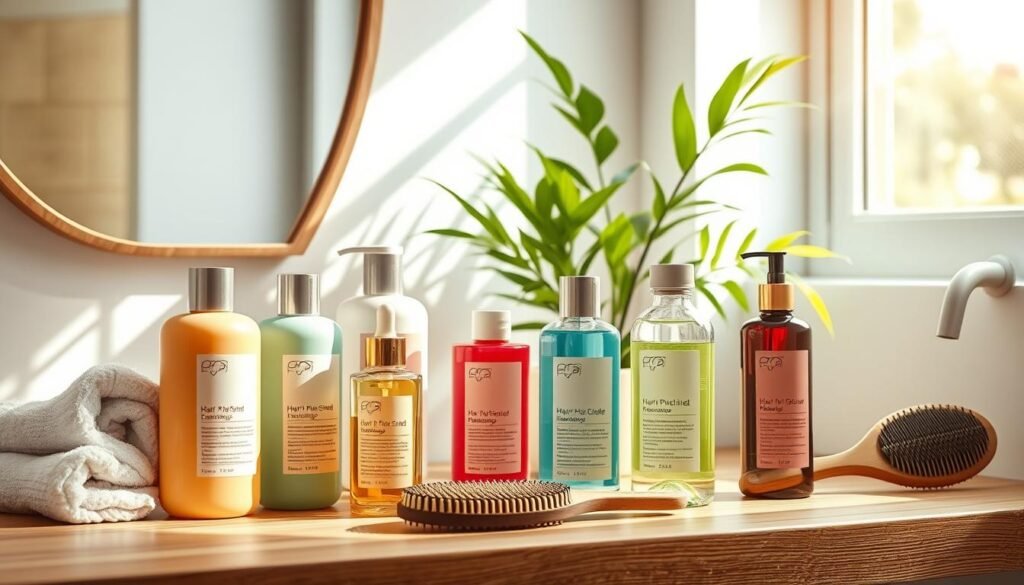
Choosing the Right Hair Care Products
Finding the right hair care products can seem overwhelming. But, with the right advice, you can create a routine that meets your hair’s needs. Whether you want to keep your hair healthy or fix specific issues, picking the right products is key.
For hair products for healthy hair, focus on quality over quantity. Choose shampoos, conditioners, and styling products that match your hair type. Look for products without harsh chemicals, sulfates, and parabens to avoid damaging your hair.
To get the best hair care tips, know what ingredients to look for. Ingredients like argan oil, biotin, and keratin can make your hair strong and healthy. But, silicones and heavy oils can weigh it down and cause buildup.
- Opt for sulfate-free shampoos to preserve your hair’s natural oils.
- Choose moisturizing conditioners that target your specific hair concerns, such as dryness or frizz.
- Invest in heat-protecting styling products to safeguard your hair from the damaging effects of hot tools.
Remember, one hair care solution doesn’t fit all. Understand your hair’s needs and create a personalized routine. With the right products, you can get the healthy, vibrant hair you’ve always wanted.
| Product Category | Key Ingredients to Look For | Ingredients to Avoid |
|---|---|---|
| Shampoo | Sulfate-free surfactants, botanical extracts | Sulfates, parabens, silicones |
| Conditioner | Fatty alcohols, proteins, natural oils | Heavy silicones, waxes, mineral oils |
| Styling Products | Polymers, botanical extracts, natural oils | Alcohol, synthetic fragrances, parabens |

“The right hair care products can transform your hair from dull and lifeless to healthy and vibrant.”
Professional Hair Care Treatments
Getting vibrant, healthy hair can sometimes need professional help. Salon treatments and expert advice can change your hair game. They help with hair strengthening and hair growth promotion.
Salon Treatments Worth Investing In
Deep conditioning treatments are great for hair strengthening. They lock in moisture, making dry, damaged hair soft and manageable. Keratin treatments also smooth and straighten hair, reducing frizz.
For hair growth promotion, scalp therapies like exfoliating scrubs and hair-stimulating serums are key. They clear follicles and promote healthier hair. Some salons offer treatments that combine these for a full hair rejuvenation.
When to Seek Professional Help
While home hair care is important, sometimes you need a pro. If you’re dealing with hair loss, dryness, or other issues, a hair care specialist can help. They’ll find the cause and create a treatment plan just for you.
For big hair changes like color or cuts, a skilled stylist is crucial. They ensure your hair is cared for and you get the look you want. Professional help keeps your hair healthy while you try new styles.
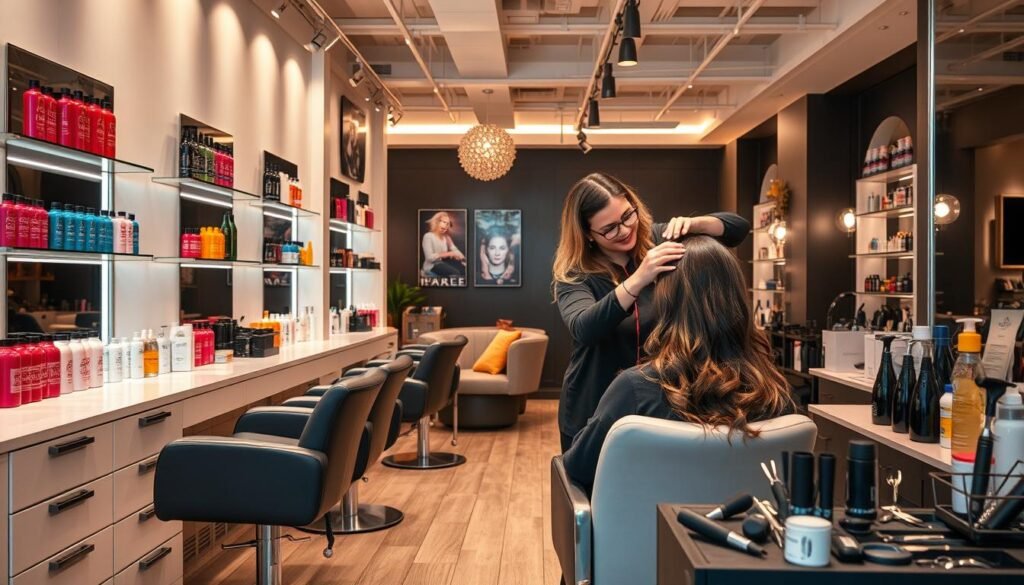
| Salon Treatment | Benefits | Frequency |
|---|---|---|
| Deep Conditioning | Nourishes dry, damaged hair, improves manageability | Every 4-6 weeks |
| Keratin Treatment | Smooths and straightens hair, reduces frizz | Every 3-6 months |
| Scalp Therapy | Promotes healthy hair growth by unclogging follicles | Every 2-3 months |
Seasonal Hair Care Tips
Keeping your hair healthy and vibrant means changing your hair care with the seasons. Summer’s heat and winter’s dry air each bring their own challenges. By adjusting your routine, you can keep your hair looking great all year.
Surviving Summer Heat
Summer sun and humidity can dry out and frizz your hair, and fade your color. To fight this, use deep conditioning treatments and leave-in conditioners. Also, add a UV-protecting hair mist to your routine. Try to avoid heat styling and air-dry your hair instead.
Combating Winter Dryness
Winter’s cold, dry air can make your hair dry and breakable. Use moisturizing shampoos and conditioners, and apply hair oils or serums to keep it hydrated. Wear a hat or scarf outside to protect your hair from the elements.
Transitioning between Seasons
When the weather changes, your hair needs extra care during these times. Slowly switch your products and techniques to match the new weather. For example, use lighter leave-in conditioners in spring and fall. Regular trims also help keep your hair healthy and easy to manage.
“Adapting your hair care routine to the changing seasons is the key to keeping your locks in top condition. By making small adjustments, you can ensure your hair thrives no matter the weather.”
Listening to your hair and being proactive with your hair care routine is the best way to prevent Hair Damage. This way, you can keep your hair healthy and vibrant all year.
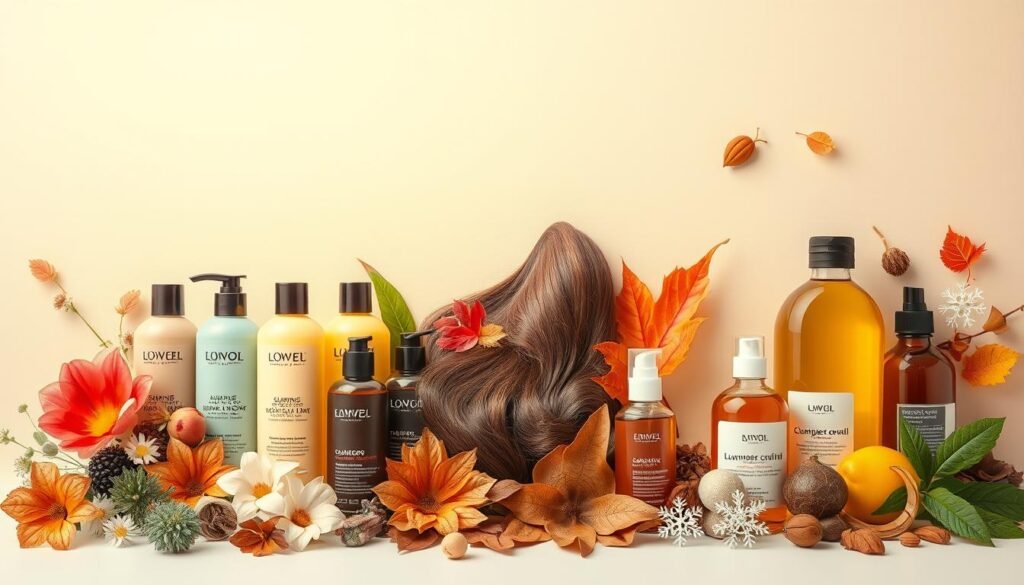
Conclusion
In this article, we’ve covered the key steps for keeping your hair healthy and vibrant. We’ve looked at the basics of hair structure and growth. Now, you know how to keep your hair in great shape.
Good hair care, the right diet, and protecting your hair from the environment are crucial. By following these tips, you can make your hair shine, grow strong, and look its best.
Getting healthy hair takes time and effort, but it’s worth it. Stick to these how to maintain healthy hair? and healthy hair habits for beautiful, healthy hair from root to tip.
FAQ
what are the essential components of a healthy hair care routine?
A healthy hair care routine includes washing, conditioning, and drying correctly. It’s also key to protect your hair from heat and the environment. This means using heat tools wisely and shielding your hair from damage.
How can I promote hair growth and prevent damage?
Eating a balanced diet full of vitamins and proteins is vital for hair health. Avoiding too much heat styling and harsh chemicals also helps prevent damage. This keeps your hair strong and growing.
What are some natural remedies and DIY hair treatments I can try?
Natural remedies like hair masks and essential oils can nourish your hair. Ingredients like coconut oil, honey, and avocado are great. Essential oils like argan, rosemary, and peppermint also help.
How can I protect my hair from environmental damage?
Protecting your hair from UV rays and pollution is crucial. Use protective hairstyles and apply hair sunscreen. Wearing hats or scarves in harsh weather also helps.
What are some common hair care mistakes I should avoid?
Avoid using too much heat and over-processing with chemicals. Don’t forget regular trims and deep conditioning. A personalized hair care routine is key for your hair type and needs.
How do I choose the right hair care products for my hair?
Choosing the right products means knowing your hair type and concerns. Look for nourishing ingredients that meet your hair’s needs. This ensures your hair gets the right care.
When should i seek professional hair care treatments?
Professional treatments are great for serious hair issues like damage or shedding. Salon treatments like deep conditioning and keratin can greatly improve your hair. Use them with a consistent home care routine.
How can I adjust my hair care routine for different seasons?
Adjusting your routine for the seasons is important. In summer, protect your hair from UV and humidity. In winter, focus on hydrating your hair. Changing your products and techniques helps keep your hair healthy all year.
